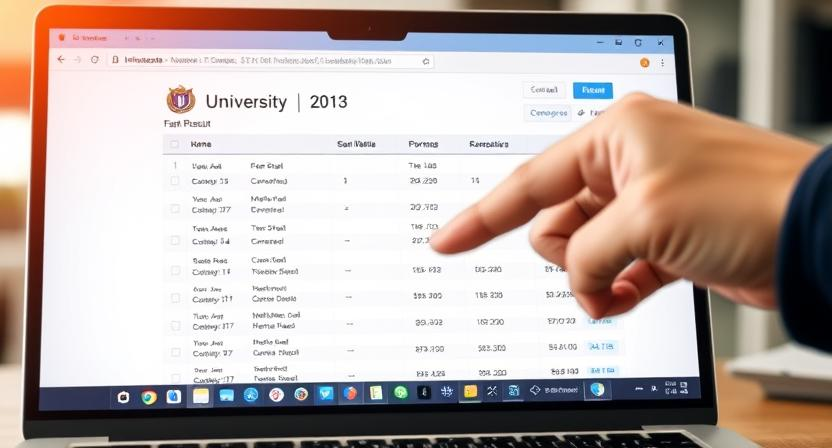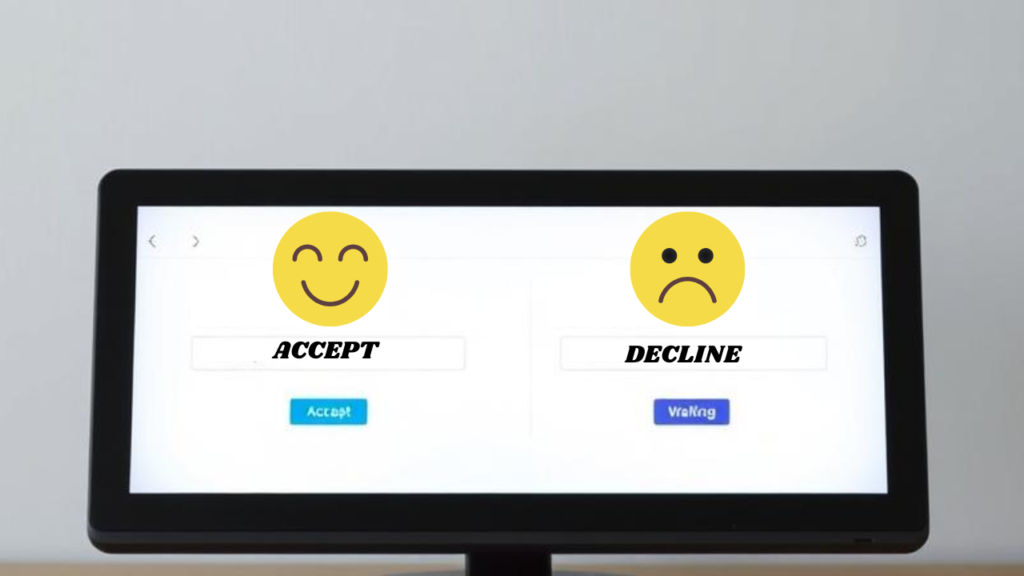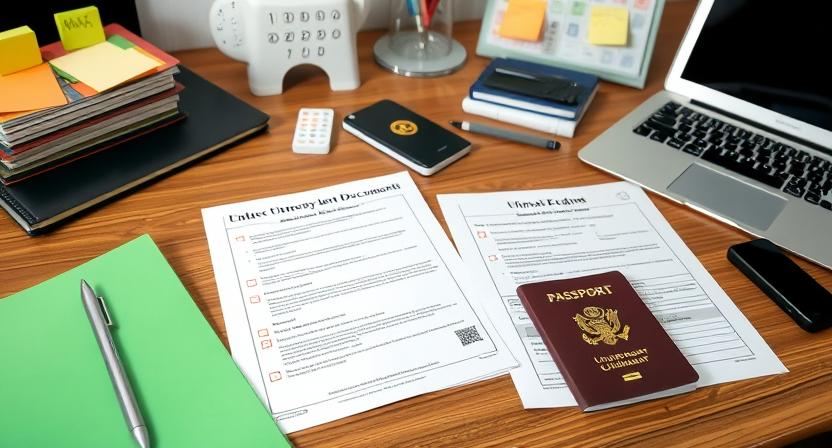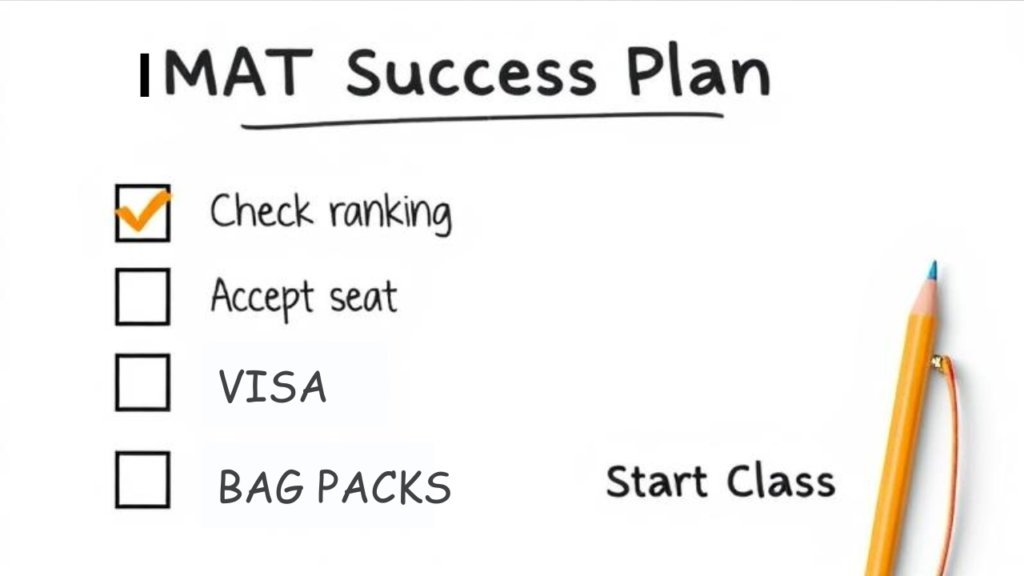
Passing the IMAT is a big deal. You studied hard, stayed focused, and now you’ve made it. That’s something to be proud of!
But after the joy, many students feel a little lost. They ask, “What happens after you pass IMAT?” It’s normal to feel unsure. There are many steps to follow after getting your results, and it can feel confusing.
Don’t worry—this blog will make everything simple. We’ll walk you through each step so you know exactly what to do next. Whether you’re from the EU or outside Europe, you’ll find clear answers to your questions here.
First Thing After Passing IMAT: Rankings

One of the first things to do after you pass IMAT is to check the official rankings. These rankings show your place among all the students who took the test. They are posted online on the official website where you registered for the exam.
The results usually come out a few weeks after the test. You’ll see your total score and your position on the list. If your score is high, you’ll be near the top. If it’s lower, you might be further down—but that doesn’t mean you’re out.
Understanding your rank is important because it helps you see which universities you might get into. The better your rank, the more choices you have. So don’t skip this step. Check the list, know your score, and get ready for the next steps.
How Ranking Affects Your University Choice

After you see your IMAT score, it’s time to understand what your place in the ranking list means. The list shows where you stand compared to all other students who took the test.
There are two main ranking lists:
- One for EU students
- One for non-EU students
If you’re from an EU country, you’ll be on the national list. If you’re from outside the EU, you’ll be on the non-EU list. Each university in Italy saves a certain number of seats for each group.
Being higher on the list gives you more choices. You can get into top universities more easily. If you’re lower on the list, don’t worry—you still have a chance. The list changes over time as students accept or give up their seats.
So, your spot on the ranking list helps decide which universities you can choose and when you’ll get your offer.
What Happens in the IMAT Scroll

After you check your ranking, the next thing is to wait for the scroll. But what is the scroll?
The IMAT scroll is the process by which the list of students moves. Some students get offers and accept, while others give up their seats. When someone gives up their seat, the next person on the list moves up. This is how you might get into a university even if you didn’t at first.
The list updates every week. You need to check the official website regularly to see if your position changes. If your name moves up, it means you’re getting closer to getting a place.
While you wait, make sure your documents are ready. Keep checking the scroll and stay calm. Many students move up during this time, so don’t lose hope.
When You Get a Spot: Say Yes or No

If your name moves up on the scroll, you might get a seat at a university. When this happens, you have a choice: accept the offer or say no.
To accept your seat, you need to do it online through the same website where you saw your ranking. You usually have a few days to say “yes.” If you miss the deadline, you might lose your place.
If you decline the offer, your spot will go to someone else. You can also choose to wait for a better university, but it’s risky. If you say “no” and don’t get another offer later, you could end up with nothing.
Think carefully before you decide. If the university is a good fit and you’re ready, it’s smart to accept. But if you want a different one and your rank is close, you might want to wait.
Just remember: whatever you choose, be sure and act on time.
Prepare for University After You Pass IMAT

Once you accept your seat, it’s time to get ready for university enrollment. This means giving the university all the documents they ask for and completing your registration.
Here are some common documents you’ll need:
- Your IMAT score and ranking
- A copy of your passport or ID
- Your high school diploma (with translation if needed)
- A declaration of value or other official paper from your home country
- Passport-size photos
- Proof of payment for enrollment fees
Each university might ask for slightly different things, so always check their website or email for exact details.
There are also important deadlines you can’t miss. If you’re late, you could lose your place. So write down the dates and keep reminders on your phone or calendar.
Here are some tips to keep you on track:
- Prepare your documents early
- Ask your school or embassy for help if needed
- Check your email regularly for updates from the university.
Getting ready for university may seem like a lot, but if you stay organized, you’ll be just fine.
Visa Process After Passing IMAT

If you are a non-EU student, passing IMAT is just the beginning. You also need a student visa to study in Italy. Don’t worry—it’s not too hard if you follow the steps carefully.
Step-by-step guide to get your visa:
- Accept your university seat
- Gather your documents
- Set up a meeting at the Italian embassy or consulate in your country.
- Go to your appointment and submit your papers
- Wait for your visa to be approved
Documents you usually need for the visa:
- A copy of your passport
- Your IMAT score and university offer
- Proof of money to support yourself
- A place to stay in Italy (even temporary is okay)
- Health insurance
- Passport-size photos
- Visa application form (from the embassy’s website)
You should apply for your visa as soon as possible after accepting your seat. It can take a few weeks or even longer, depending on your country.
Make sure to apply at the Italian embassy or consulate near you. Check their website for exact rules and the earliest time to book your appointment.
It’s important to get your visa on time, so don’t delay. Once it’s done, you’re one big step closer to starting your new life in Italy.
Moving to Italy After Passing IMAT

After you pass IMAT and get your visa, it’s time to plan your move to Italy. This is an exciting step, but it also takes some planning so everything goes smoothly.
Finding a Place to Live
You can live in:
- Student housing provided by the university
- A shared apartment with other students
- A private room or flat on your own
Student housing is cheaper and easier to manage, but spaces fill up fast. Start looking early and ask your university if they offer help finding a room.
Budget Tips and Student Life Costs
Living in Italy can be affordable, but it depends on the city. Here are some common costs:
- Rent: €250–€600 per month
- Food: €150–€250 per month
- Transport: €20–€35 per month with a student pass
- Internet and phone: €20–€30 per month
You can save money by cooking at home, using student discounts, and sharing your room.
What to Pack and How to Prepare
Pack smart. Bring clothes for both summer and winter, as Italy has different seasons. Also pack:
- Important documents (passport, visa, school papers)
- A few basic medicines
- Power adapters for chargers
- A small bag for school
Don’t bring too much—you can always buy things in Italy.
Moving to a new country may feel scary at first, but many students do it every year. Plan, stay organized, and you’ll feel at home in no time.
First Days of Medical School in Italy

You’ve passed IMAT, moved to Italy, and now it’s time to begin your first days of medical school! Everything is new, but don’t worry—you’re not alone. Many students feel the same way.
What to Expect in Orientation Week
Orientation week is your welcome to the university. You’ll get:
- Info about your classes and schedule
- A tour of the campus
- Help with university rules and systems
- Time to meet teachers and staff
Some universities also hold fun welcome events or student meetups.
First Classes and How to Get Ready
Classes in Italy may be different from what you’re used to. They are often in English (for IMAT students), and some will be in big lecture halls. Bring a notebook or laptop, be on time, and don’t be afraid to ask questions.
You can prepare by:
- Checking your class schedule early
- Getting your books or reading lists
- Finding your classrooms before the first day
Meeting New Friends and Adjusting to a New Life
Your first few weeks are a great time to make friends. Talk to other international students—they’re also eager to meet new people. Join clubs or study groups if your university offers them.
It might take time to adjust, but every day will feel easier. Be open, stay positive, and enjoy this new chapter in your life.
Smart Advice After You Pass IMAT

Passing IMAT is just the start of your medical journey. To make things easier, here are some smart tips to help you stay ahead:
Don’t Wait to Get Your Papers Ready
Start collecting your documents early. Things like your high school diploma, passport, visa papers, and university forms can take time. If you wait too long, you could miss key deadlines. Stay organized from the start.
Join Student Groups Online
Many IMAT students create groups on Facebook, WhatsApp, or Discord. These groups are great for asking questions, finding roommates, and learning from others who are in the same boat. You’ll feel less alone and more prepared.
Ask for Help When Needed
It’s okay to feel confused sometimes. Don’t be shy—ask your university, embassy, or even other students if you need help. People are usually happy to support new students. Asking questions is better than making mistakes.
If you stay active, plan, and keep learning, you’ll do great in your new journey as a medical student in Italy.
Be Ready for What Happens After You Pass IMAT
Now you know what happens after you pass IMAT. Let’s quickly recap the steps:
- Check your rankings to see where you stand.
- Understand your position in the list and how it affects your university choices.
- Wait for the scroll and be patient as the list updates.
- Say yes or no to your offer when it’s your turn.
- Prepare for university enrollment by gathering your documents.
- If you’re a non-EU student, make sure to apply for your visa.
- Plan your move to Italy, including finding a place to live and budgeting.
- Attend orientation and start classes to kick off your medical studies.
Through each step, stay focused and stay positive. It’s an exciting journey, and every decision brings you closer to your dream of becoming a doctor.
You’ve worked hard to get this far, and with every new challenge, you’ll grow even stronger. Keep going—you’re on the right path!
FAQs – What Happens After You Pass IMAT
Q: Can I change universities later?
A: Yes, but it’s not easy. You need strong reasons and proper paperwork to transfer, and it’s often better to stay at the university you first chose.
Q: What if I didn’t get a place right away?
A: Don’t worry! You can still move up in the scroll as some students decline their offers. Be patient and keep checking for updates.
Q: Is the visa hard to get?
A: No, the visa process is simple if you have all the required documents. Just follow the steps carefully and apply early to avoid delays.
Q: Is it necessary to know Italian to study medicine?
A: No, your IMAT courses will be in English. However, learning a little Italian will make it easier for you to live in Italy and communicate in everyday situations.
Q: What happens if I miss a deadline?
A: Missing a deadline can result in losing your place at the university. That’s why it’s important to keep track of all dates and act quickly when needed.


